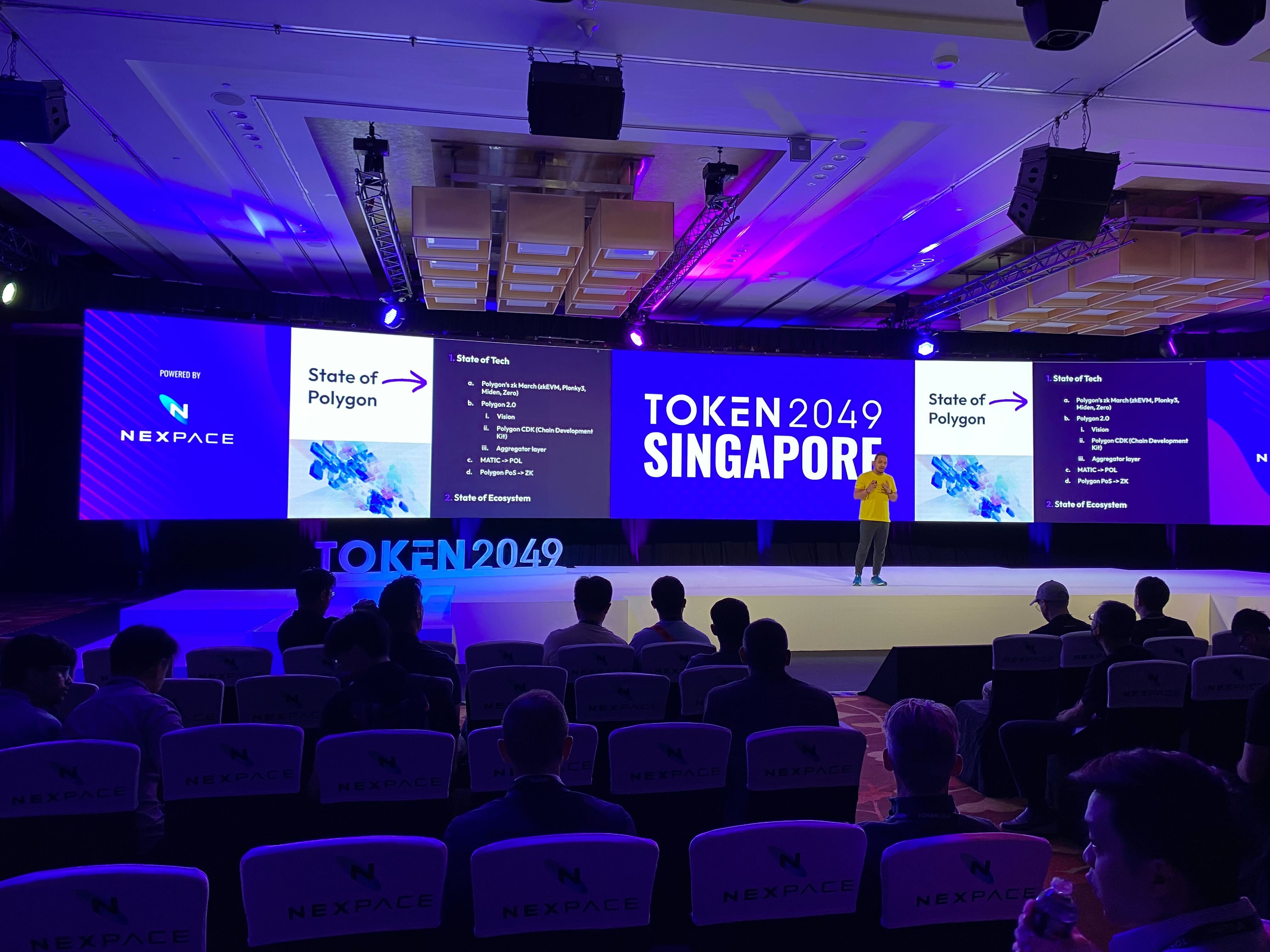Introduction
Sandeep Nailwal, co-founder of Polygon – a layer 2 blockchain firm – expresses his belief in the company’s strategic step towards the development of zero-knowledge proof (ZK-proof) powered scaling solutions for the Ethereum ecosystem. The firm allocated a significant budget of $1 billion specifically for this purpose. Nailwal’s confidence stems from the prospects of the fast-evolving recursive ZK-proof technology, also known as ‘Polygon 2.0’. It aims to create a seamless interoperable blockchain ecosystem.
Token2049 Conference
During his keynote address at the latest edition of the Token2049 conference in Singapore, Nailwal provided insights into Polygon’s scaling efforts and the future of ZK-proof technology.

Image: Polygon Co-founder Sandeep Nailwal at Token2049 in Singapore.
Web2 and Web3
While speaking, Nailwal touched upon how Web2 and Web3 are parallel in form and function. Here’s how he defined them:
- Web2: The internet of information with “practically unlimited scalability”. It can transfer or convey information in various forms across the globe at unprecedented speeds.
- Web3: Often referred to as the “internet of value”, demands the integration of two capabilities, infinite unbounded scalability and unified liquidity for value transfer, in order to become pervasive.
“Firstly, infinite, unlimited unbounded scalability, and unified liquidity for value to be transferred. There cannot be 100 chains with the value distributed across and they cannot interoperate.” – Sandeep Nailwal
According to Nailwal, ZK-proofs from various chains need to be brought together under a common layer. This would essentially play a role similar to an aggregator or interoperability layer, similar to Web2’s role in becoming the internet of information.
Aggregator Layer
Nailwal sees the recursive ZK-proving technology as an answer to this aggregator layer. The technology, set to be launched in the coming months, will enable different blockchains to send ZK-proofs of their network states to the aggregator layer. The layer, in turn, will consolidate all the attestations and submit a final proof to the Ethereum network.
“The moment those two proofs are submitted on Ethereum layer, we have a mechanism where we have a global state route on Ethereum and then any kind of liquidity can move across the chain without coming to Ethereum.” – Sandeep Nailwal
This innovation is expected to accelerate the proofing process to a probable two seconds enabling every chain to submit a proof of activity on their network every two seconds.
“Our goal is that this proving will eventually go down to, like probably, two seconds. So every chain is submitting a proof of whatever has happened on their ecosystem or on their chain every two seconds to this aggregator layer.” – Sandeep Nailwal
Furthermore, Nailwal anticipates that cross-chain transactions would take a mere 4 to 5 seconds, effectively a third of an Ethereum block time, which would feel “like one single big block space”.
He emphasized the advantages of having high liquidity chains like zkEVM and proof-of-stake chain to share value to applications, while larger layer 1 blockchain platforms showed interest in using the interoperable layer.
“Anybody can join this layer and it’s a mutual win-win because everybody benefits from each other’s liquidity.” – Sandeep Nailwal
Advancements
Polygon launched its beta version of zkEVM to hit the mainnet in March 2023, allowing developers to deploy smart contracts and decentralized applications with faster throughput and lower costs than Ethereum’s Layer 1.
The company recently rolled out its Chain Development Kit to aid developers in building, customizing, and deploying layer 2 chains linked to the broader Ethereum ecosystem.